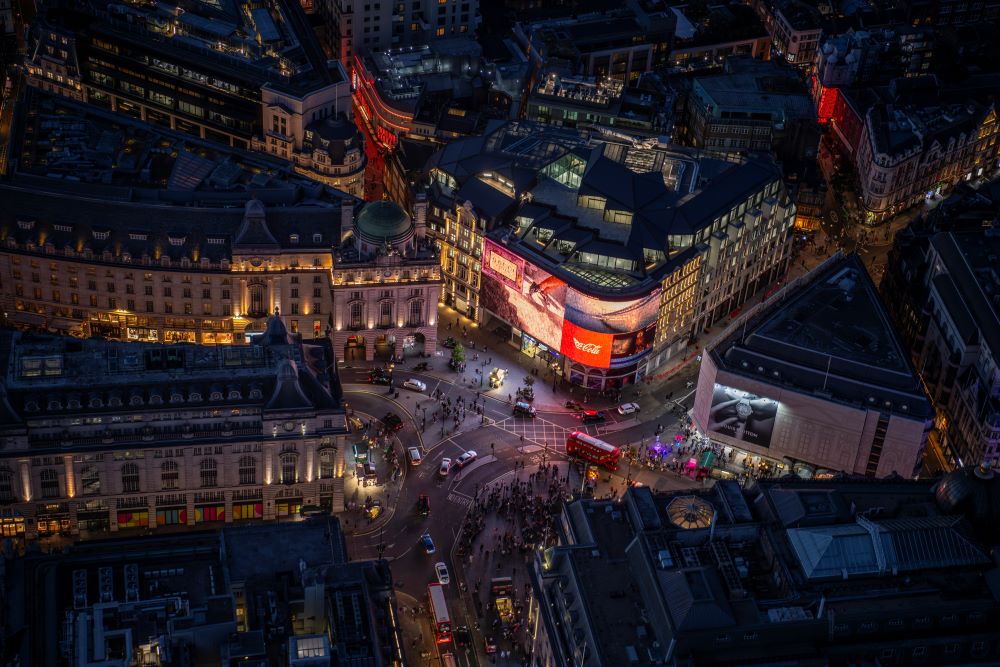Lucent
Westminster

Project Details
Practice
Fletcher Priest Architects LLP
Middlesex House , 34-42 Cleveland Street , LONDON , W1T 4JE , United Kingdom
Lucent unifies 13 distinct buildings behind London’s most famous billboard into a mixed-use development that retains and celebrates the identities of each building and Piccadilly Circus. Since the early 1900s, Piccadilly has been home to illuminated advertising, and the lights have since hosted art installations, advertising campaigns and messages from the royal family. In 2012, Landsec, Europe's largest property company, commissioned Fletcher Priest Architects to design a transformational plan for the area situated behind the iconic Piccadilly Lights. The objective was to convert this space into a dynamic creative workspace, enticing retail establishments, and residential buildings while ensuring uninterrupted operation of the lights and existing shops. For over six decades, the site had posed a persistent planning challenge, with a series of design propositions falling short of gaining approval. The area behind the iconic Piccadilly Lights had lain vacant since the 1950s. However, in 2016, we successfully obtained planning permission for an ambitious redevelopment project encompassing a bustling city block at the heart of London. This city block is bordered by the renowned Piccadilly Circus, Shaftesbury Avenue's Theatreland district, Denman Street in vibrant Soho, and Sherwood Street. Notably, this site is home to the world-famous advertising billboard, Piccadilly Lights, a prominent fixture in national culture and an essential stop on every tourist's agenda. We also designed the recently completed Piccadilly Lights, a digital screen of unparalleled scale, now recognised as the largest single digital screen in all of Europe. Lucent, situated at the prestigious One Sherwood Street, garnered accolades from Westminster Council for its innovative approach. It adeptly reconciles a complex assortment of functions and seemingly conflicting interests with a clever and rational strategy that understates the intricacy of the site. Our proposal elevates the essence of the original buildings on the premises, while concurrently enhancing the public realm. A tranquil garden space, nestled behind the iconic advertising billboard, introduces natural light from above, revitalising the space for practical use. The exterior of this complex, historic site has been celebrated and protected, with new facades designed to echo nearby styles and certain elements, including listed buildings, carefully dismantled and restored. Fletcher Priest worked with bespoke plaster moulding designers Locker & Riley to completely reinstate the ceiling and walls of the banking hall of the Grade II listed London County and Westminster Bank, designed by Sir Reginald Blomfield in the early 1900s. Rainbow Corner at the junction of Shaftsbury Avenue and Denman Street - the home of the American Red Cross Club during WWII - has been marked with a feature design which uses three-dimensional tiles to graduate the transition from roof to façade. The handmade faience tiles were manufactured by Shaws of Darwen and architectural ceramicists NBK in Germany, before being assembled in precast concrete. Other unlisted facades were deemed to be of high architectural value, and so have been dismantled and reconstructed in facsimile. 90% of the Portland and Bath stone from the scheme was salvaged, repaired, and reused, working with Szerelmey and Donald Insall Associates. The building’s main entrance on Sherwood Street is designed to look like a Mayfair gallery, with huge windows opening up the space to the street. The minimalist interior finish includes curated artwork hung on the walls, and a feature spiral staircase. Already nominated for several engineering awards, the spiral stair made by D. Wilson from Birmingham forms a sculptural centrepiece of the reception area. Reflecting a changing view of the office, the first and second floors are flexible, with floors three to six consisting of exceptionally large floorplates for the area. The workspace has been designed to the highest standards and can be considered one of the healthiest in the country, with a target rating of WELL Core Gold. Committed to sustainability, the building is also targeting BREEAM Outstanding. The Light Garden is just one of a series of outdoor spaces throughout the building, designed to support the wellbeing of tenants, as well as improve the environment and biodiversity of the area. 22 terraces and gardens across the building include a variety of planting, with more than 600 plants from 38 different species. Every floor from the third upwards has access to a terrace, all providing views of London which have, up to now, never been experienced before. A central courtyard on the third floor is completely open to all weathers, further improving air circulation and natural light in the building. The site is elegantly ensconced within a folding geometric roofscape. The elevated rooftop gives space for workspaces and a new restaurant. These open onto terraces and offer awe-inspiring vistas across the heart of London.



